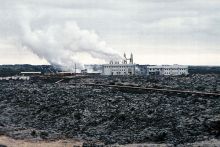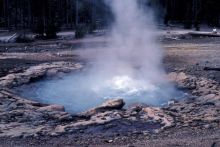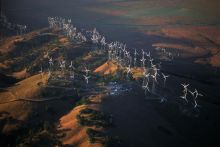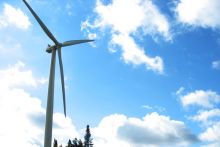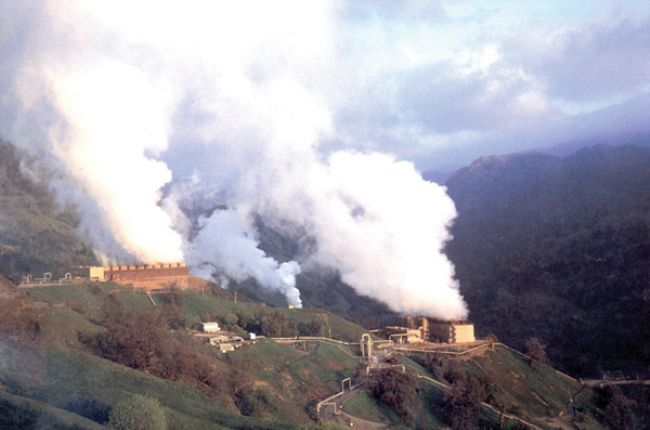
Traditional geothermal power uses natural steam or very hot water trapped in deep rock formations. Extraction wells – often more than a mile deep1 – are drilled into the hot rocks, allowing the steam or hot water to flow up to the surface. Once it has been used to produce electricity, the remaining water can be re-injected at similar depths to re-supply the natural reservoir with water and maintain energy production.2 However, the traditional geothermal process requires these deep rocks to be permeable enough for water to flow through them and into the extraction well.
There are many areas where deeply buried rocks are very hot but too dry and impermeable for traditional geothermal systems. This is often because natural fractures in the rock have been sealed up by natural mineral deposits in the time since those fractures formed.3 Enhanced geothermal systems (EGS) inject water at high pressure into these deep rocks to re-open the natural fractures and allow hot water or steam to flow into extraction wells.3 Continuous injection keeps these fractures open and provides a constant source of water to be heated up and extracted for electricity production.
References
1 Geothermal Basics U.S. Department of Energy - Office of Energy Efficiency & Renewable Energy
2 Energy 101: Geothermal Energy U.S. Department of Energy - Office of Energy Efficiency & Renewable Energy
3 Geothermal Technologies Program: Enhanced Geothermal Systems U.S. Department of Energy - Office of Energy Efficiency & Renewable Energy
Learn More
- Geothermal Technologies Program: Enhanced Geothermal Systems (Report) U.S. Department of Energy - Office of Energy Efficiency & Renewable Energy
2004 report describing how enhanced geothermal systems work, and outlining the ongoing projects in the United States and elsewhere.
- FORGE Home (Website) U.S. Department of Energy - Office of Energy Efficiency & Renewable Energy
Website for the ongoing FORGE project, which aims to test and advance enhanced geothermal system technologies.
- Geothermal 101 Infographic (Webpage) U.S. Department of Energy
Infographic explaining how EGS works and why it is important. The infographic also has an accompanying case study from America’s first commercial, grid-connected EGS in Nevada.
- Geothermal Technologies Office EGS Factsheet (Factsheet) U.S. Department of Energy
A 2-page fact sheet covering the benefits, concerns, potential, and operational features of EGS
- EGS 720 Video (Video) Lawrence Berkley National Lab
A short introductory video on EGS from the Lawrence Berkley National Lab earth sciences division.


